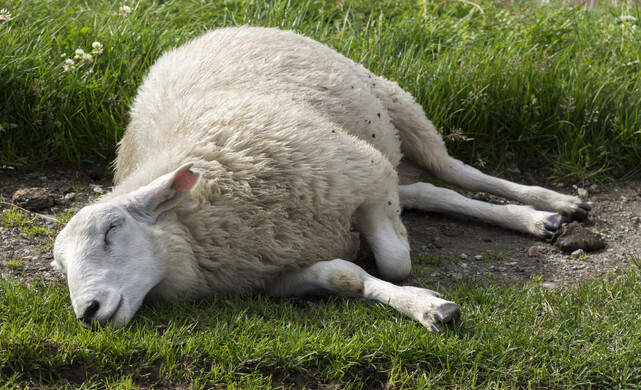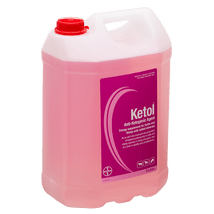Sleepy sickness, twin lamb disease, lambing sickness, and pregnancy toxaemia are all names for the same thing: a disease in late pregnancy, often of multiple bearing ewes, occurring as a result of excessive fat breakdown. Historically, widespread outbreaks of sleepy sickness was common, and a large number of ewes died as a result. While sleepy sickness is still common, farmers have a better understanding of the risk factors causing the disease, and can provide better nutrition over winter. The main risk factors leading to this disease can be categorised into two syndromes - undernutrition or stress.
The undernutrition syndrome is seen in multiple bearing ewes with a falling plane of nutrition in the last two months of pregnancy. The stress syndrome is seen in well nourished ewes that are subject to a sudden fast, either as a result of inclement weather, pre-lamb shearing or crutching, or as a result of a disease that restricts the ewes feeding ability. Ewes are often seen separated from the flock, with depression, apparent blindness, sluggish or no reactions to humans/dogs, staggering, and leaning against fences or troughs. A characteristic feature is ‘wool pull’, where the wool plucks easily. As the disease progresses, muscle twitching, white froth around the mouth, and star gazing is seen. In the later stages, the ewe becomes recumbent, comatose and dies. Fetal death is common if the disease is prolonged, and in some cases the ewe will abort.
Treatment centres around providing nutrients and rehydration. We recommend giving 100mL of a bag of Glucalphos under the skin, and 120mL of Ketol into their mouth once daily until resolved. Metacam should also be given under the skin. When treating, it is important to keep the ewe in with the mob to encourage feeding. If she is close to lambing, caesarean sections can be done on farm or at the clinic to reduce the drain on the ewe. If treated early, the prognosis is good. However once the ewe is recumbent, death is common despite treatment.
- Emily Chisholm



